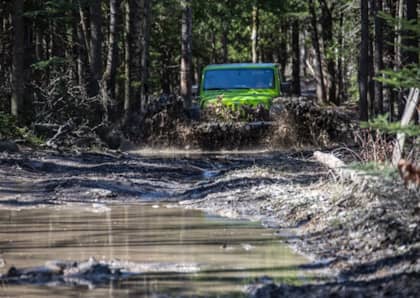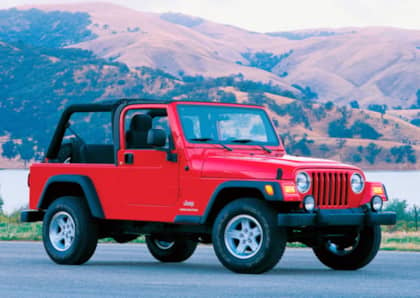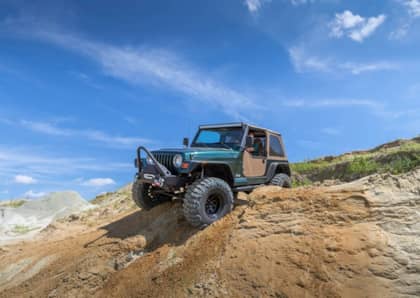Jeep Wrangler TJ Buyer's Guide
Everyone wants a good deal; or, at the very least, they want to feel as though they got a good deal. Buying a used anything can often be anxiety inducing, but a used 4x4 can take those fears of previous owner neglect to an entirely new level. With the advent of forums and e-commerce sites, the dynamic of buying a used vehicle has changed drastically. No longer are you stuck listening to a used car salesmen spin tales about the previous owner being a little old lady that only drove it to church on Sundays.
These days, you can go directly to the previous owner, which can often tell a story all its own. For those transitioning into the off-road hobby or simply looking to move to a vehicle with better aftermarket support, the Jeep Wrangler is often the go-to platform.
Currently, there are three distinct generations of the Wrangler platform: the 1987-1995 YJ, 1997-2006 TJ and the 2007-present JK.
No, we didn’t skip a year. There technically wasn’t a “new” Wrangler produced in 1996. Each generation Wrangler has its list of pros and cons. For those looking for a secondary vehicle that will be capable off-road while still easy-to-handle on-road, the ’97-’06 TJ is usually the best fit. The reason is that this ‘tweener Wrangler gives you the better coil-sprung suspension that’s similar to that of the newer JK, but retains the smaller and more simplistic setup that the YJ is known for. It also hits that sweet spot when it comes to price.
Speaking of price, there really is no set standard when it comes to a modified TJ. A stock one on the other hand, you can look up in NADA or KBB and get a good idea. As is the case with virtually anything else automotive related, most sellers understand that they will never get their money back out of what they are selling. This is where you can often capitalize on buying a rig that’s already built, but you have to know what you are looking at before you can really tell if your are getting a deal.
With so many factors to consider when purchasing a used Jeep Wrangler TJ, we decided to put together a guide to steer you in the right direction:
Model Types
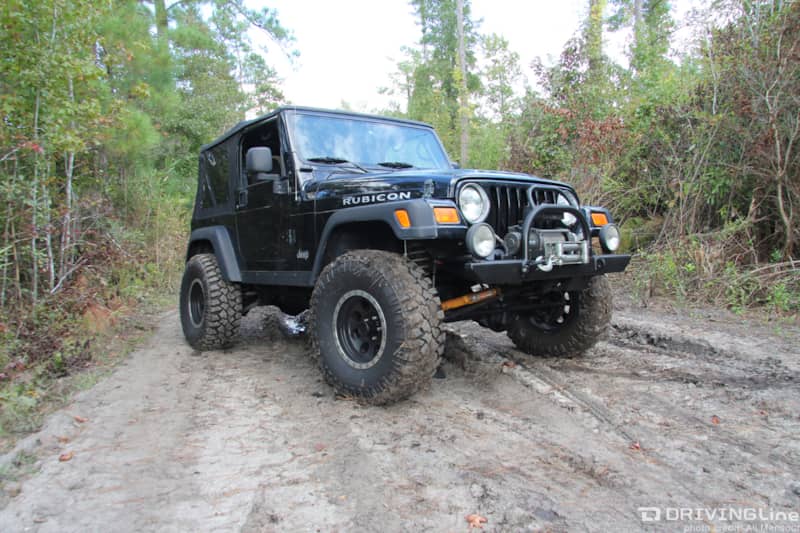
There were a handful of theme packages and trim levels to pick from throughout the TJ’s long run. When it comes to going off-road, the most significant model is the Rubicon. Named after the famed Rubicon Trail, the Rubicon model is designed for rockcrawling. The Rubicon was only available from 2003 to 2006 and comes with Dana 44 front and rear axles, selectable air lockers, a 4:1 transfer case ratio and a few other off-road related goodies. These Jeeps will demand more money, but it’s without question the most capable factory TJ you can buy.
The Sahara and Sport editions follow closely behind in value as most came standard with the more powerful 4.0L inline-six engine and were often equipped with the optional Dana 44 rear axle. We’ve built both and found that when modifying the TJ significantly, you are likely better off purchasing a non-Rubicon model. If you only plan to do some light wheeling and modest modifications (i.e. small lift and tires), the Rubicon is definitely a better turn-key rig.
Engines

The TJ was offered with three engines: the 4.0L inline-six, the 2.5L four-cylinder (’97-’02) and the DOHC 2.4L four-cylinder (’03-’06). Having owned both four- and six-cylinder models, we highly recommend opting for the six-cylinder engine. Power numbers come in at 120 hp with 140 lb-ft of torque for the 2.5L, 147 hp with 165 lb-ft of torque for the 2.4L, and for the 4.0L engines, 181 hp with 222 lb-ft of torque (’97-’99) and 190 hp with 235 lb-ft (’00-’06). The four-poppers will save you money on the purchase price, but they just don’t have the gusto the 4.0L has.
Please note: the four-cylinders are not bad engines. They are actually very reliable. The trouble is they don’t have enough power once you start adding on layers of aftermarket parts and oversized tires. The four-cylinder engines were also paired with the smaller and weaker manual transmissions. Also, if you’re thinking that maybe you can just swap in a 4.0L later down the road, understand that you will have just as much time and money in the conversion as if you were installing a V8.
Underhood Issues
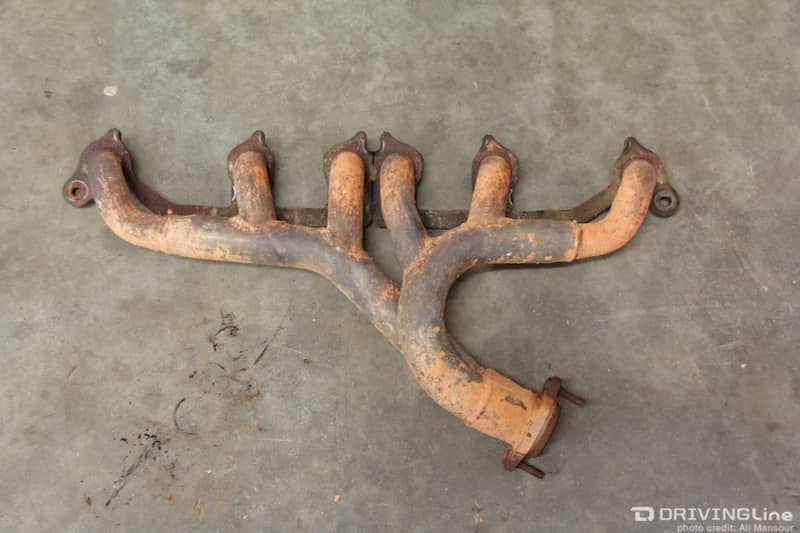
Now that we agree that you are not getting a four-cylinder Jeep, let’s examine some of the spots you need to look at on the 4.0L engine.
These engines are known to leak oil, but they don’t have to! The most common culprits are the valve cover gasket and rear main seal. Thankfully, the 4.0L has a two-piece rear main seal. This means you can swap it out without removing the transmission.
Another trouble spot, which is more common on the ’97-’00 models, is a cracked exhaust manifold. You might not be able to see it, but you should be able to hear it. A cracked exhaust manifold can create a host of other problems, so it’s not something that can be ignored. Replacing the manifold is a straight-forward, but time intensive job. Be sure to keep that in mind when negotiating.
Lastly, check the top of radiator for leaks. The TJs use an aluminum radiator with clamped-on plastic tank caps that are known to separate and leak. A replacement radiator is around $150 dollars and is a simple job on the Wrangler.
Transmission Options
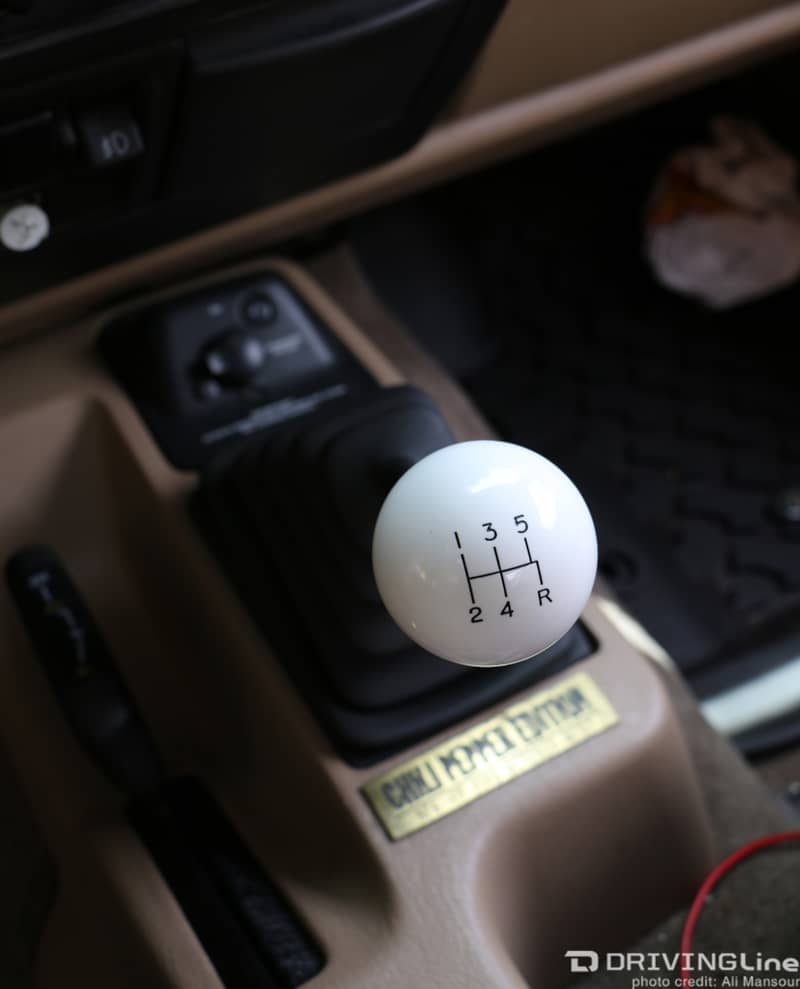
Opting for a manual over an automatic transmission often comes down to what you are comfortable driving.
For those who enjoy rowing gears, you will have three options of manuals depending on the year of the TJ. Until the year 2000, the AX-15 five-speed was standard issue. It was ultimately replaced with the stronger NV3550 five-speed unit until late 2003. That’s when we see the six-speed NSG370 make an appearance. Of the bunch, the AX-15 is one of the most problematic in regards to synchronizer issues, but we wouldn’t let that keep us from purchasing one TJ over another.
If you want to go with an automatic, you will have a 32RH three-speed in the ’97-’02 six-cylinder TJs. These transmissions are very durable, but will cause the Jeep to rev higher on the highway. The ’03-’06 42RE automatics are four-speed overdrive transmissions that are especially heat sensitive, but do a better job of keeping the rpms more manageable on the road. Differential gearing is extremely important when it comes to keeping both the manual and automatic transmissions alive. Just remember, as the tire size increases, so should the numerical ratio of the differential gears.
Axles
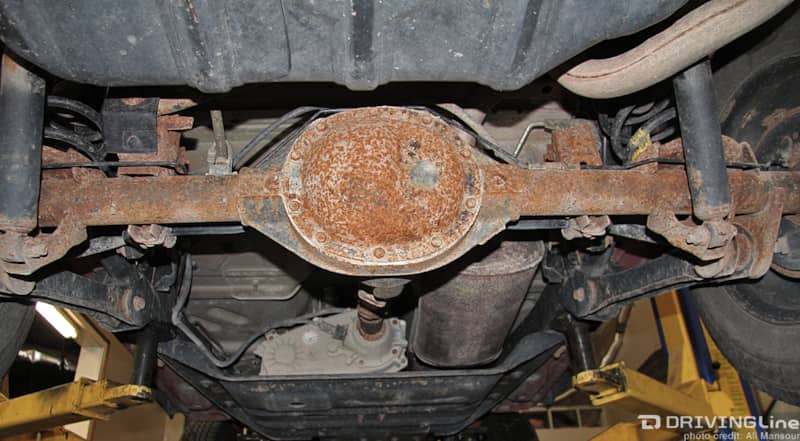
As we mentioned earlier, the Rubicon comes with Dana 44 axles front and rear. For all other TJ Wranglers, the front axle will be a low-pinion Dana 30. This axle works fine in a stock TJ, and is strong enough to handle up to a 35-inch-tall tire.
The common issues with the front axle include a leaky pinion seal and bad Universal joints in the axleshafts. Out back, you either have a Dana 44 or a Dana 35. The Dana 35 (shown above) is junk... and that’s putting it nicely. We barely trust the problematic c-clip axle in stock form. If you are having trouble finding a TJ with a Dana 44 rear, worry not: the aftermarket is full of bolt-in axle upgrades. Just plan on spending a couple grand to get a proper rear axle.
Sloppy Steering
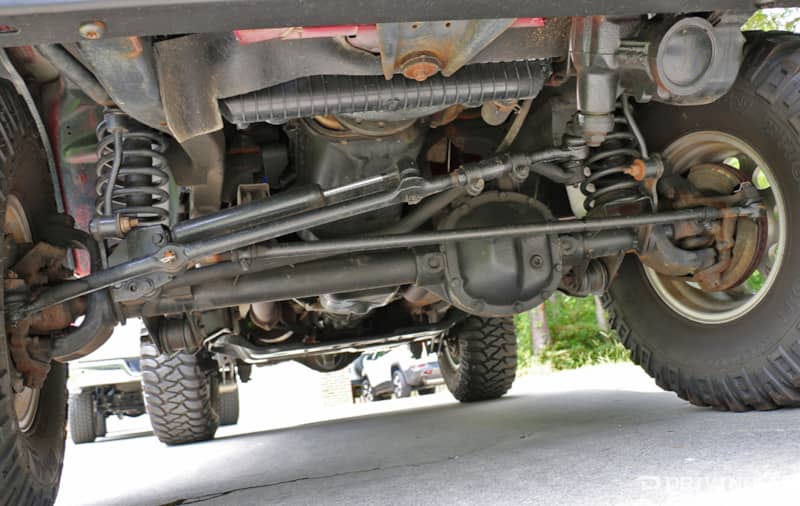
Going off-road can do a number on the Wrangler’s steering and suspension joints. Even just adding larger tires to a mall crawler can accelerate wear. If your new-to-you TJ feels a bit wobbly or clunky, chances are the track bar is the part to blame. If the Jeep still has the factory track bar, you can simply replace it with one from the local parts store for a little over $50. If that doesn’t fix the problem, the track bar mount at the axle side may be damaged.
If the hole itself has become oblong (usually the result of driving with a loose bolt), you may be able to drill it out with a bigger size and install an aftermarket front track bar. If the bracket itself is damaged, there are a number of companies that sell upgrade brackets. If you are unsure what the problem is, have a friend rotate the steering wheel from left and right while you look closely at the track bar bushings. If you noticed the bar is moving or plunging significantly at either end, it’s likely the bushing is bad.
Rust & Suspension
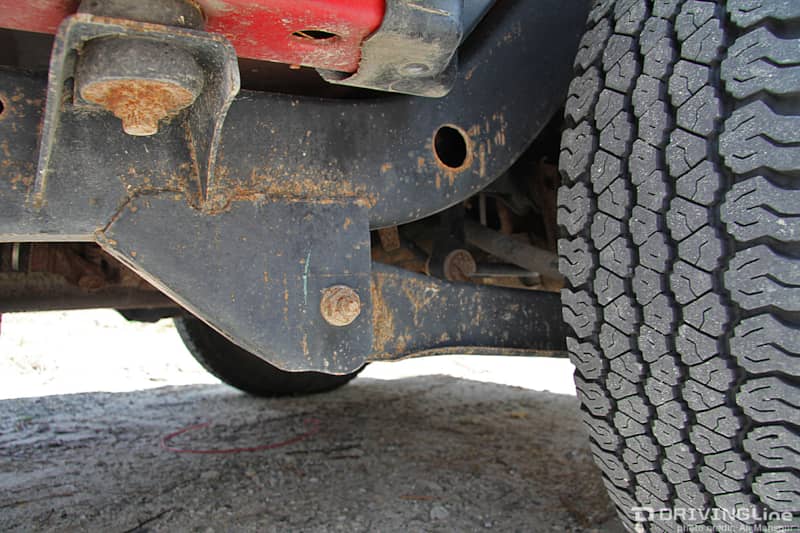
We don’t care how nice the body appears, crawl under the Jeep and look closely for rust. Check the inside and outside of the framerails. If the Jeep has carpet, pull it up and look underneath (especially in the front floorboard area). A little surface rust here and there isn’t uncommon, but a large amount will only lead to more problems.
If the Jeep looks like it’s been off-road, examine the control arms carefully. You’re looking for bent arms and blown bushings. You can purchase an entire suspension kit on the cheap these days, so don’t worry if the arms look past their prime.
Top & Doors
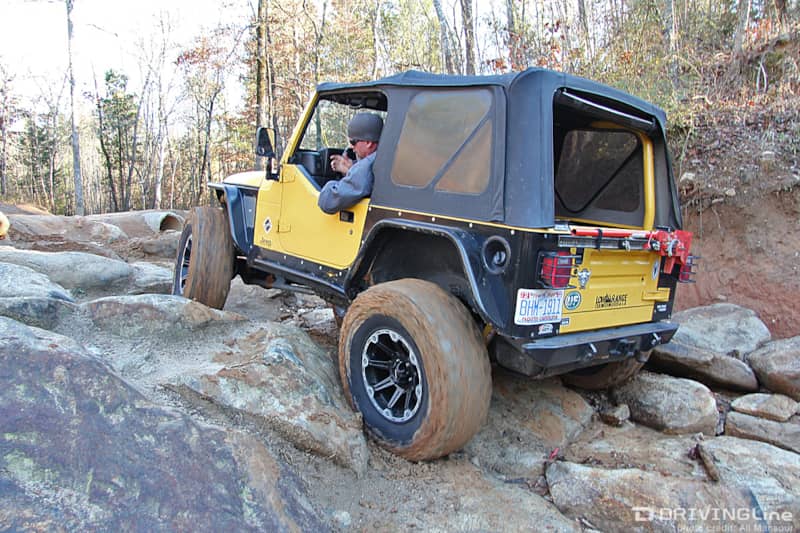
Later model TJs will usually have full doors, which is great if you plan to drive the Wrangler on the road or in inclement weather frequently. If the Jeep is going to be a secondary rig, we suggest opting for the half doors. They will give you more visibility on the trail and are a lot lighter than the full doors.
A hardtop is another nicety if you are spending time on the road, but the weight savings and ease of removal of the soft top ranks it higher on our list. If the Jeep happens to have a hardtop, check closely for cracks. Even storing a hardtop incorrectly can cause significant damage.
The Unlimited Equation
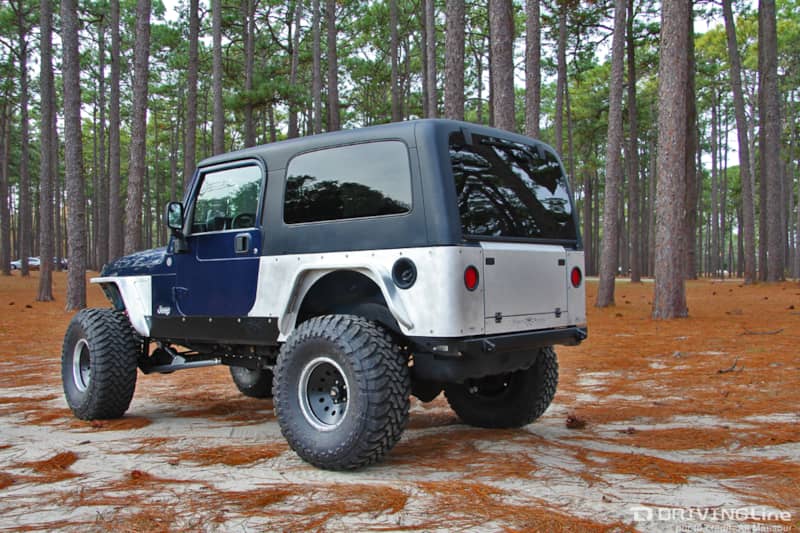
One other consideration when looking at a TJ is the ’03-’06 Unlimited version. These are often referred to as LJs. You not only get extra interior space with the Unlimited, but a 103.5-inch wheelbase, which makes for better handling and performance on and off-road. Given they only made the LJs for three years, they will be a bit more expensive over a TJ. A Rubicon edition was offered in ’05 and ’06 for those looking for an even more capable out-of-the-box setup.
More From Driving Line
- Looking for a newer Jeep Wrangler? Check out our 2007-2017 JK Buyer's Guide.




